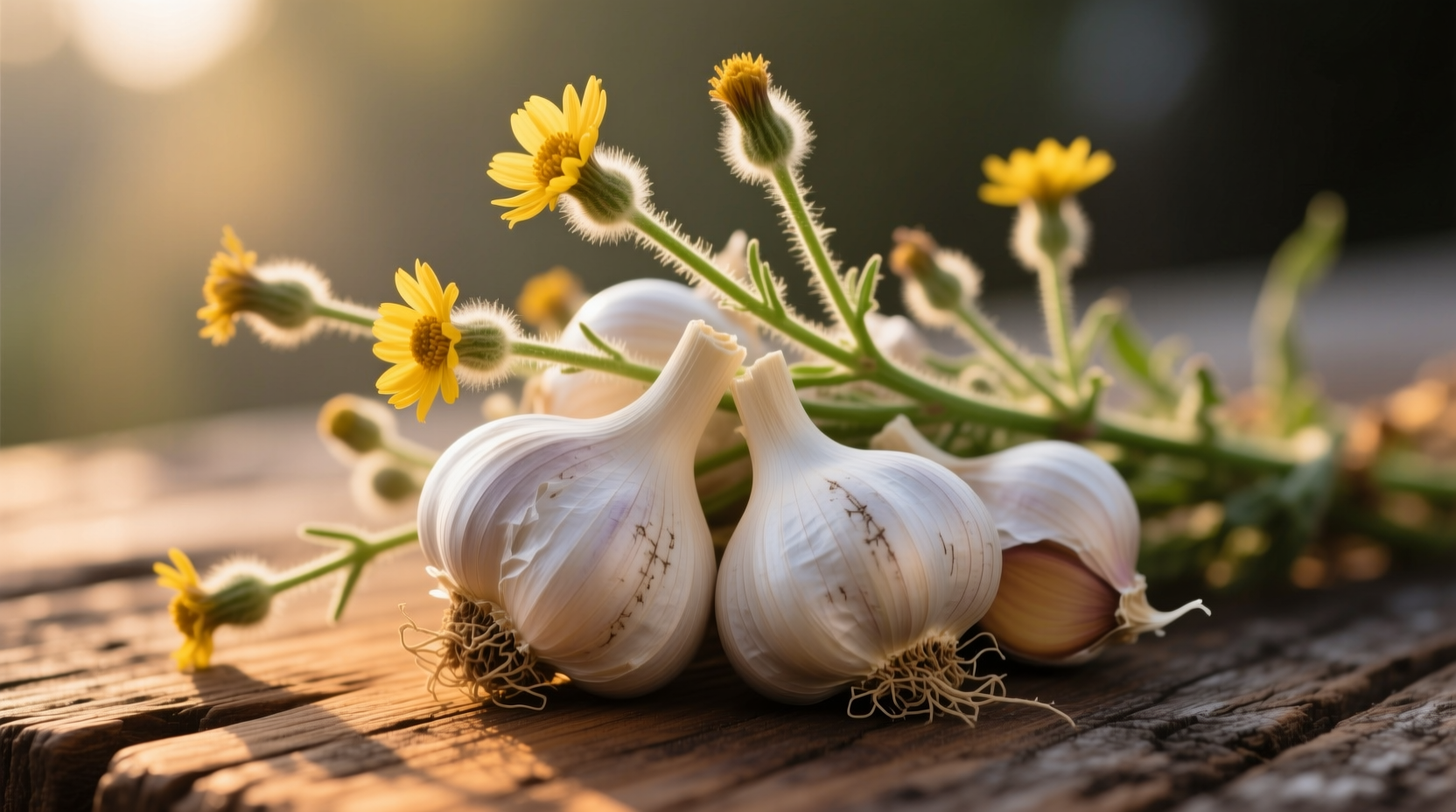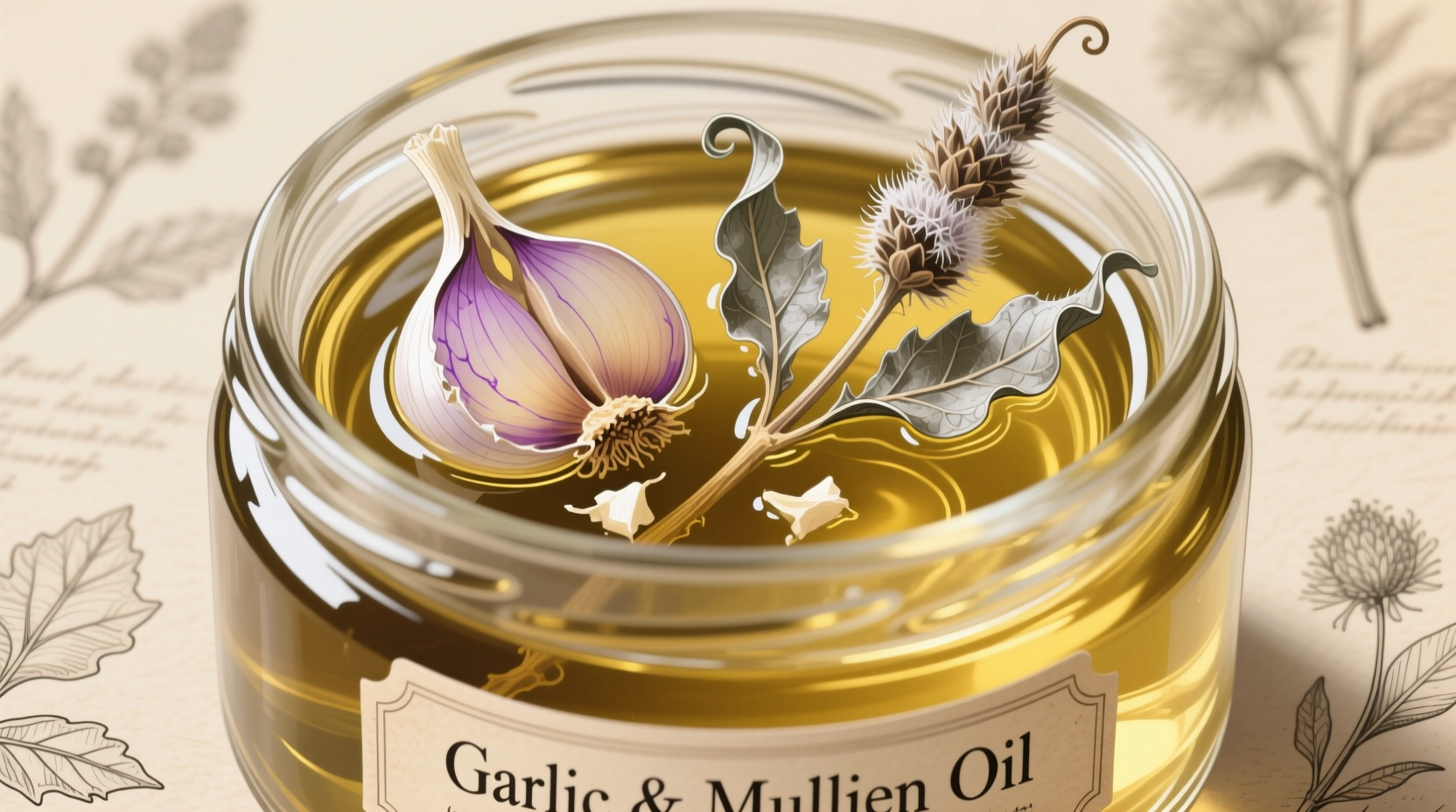Garlic and mullein oil is primarily used as a natural remedy for ear discomfort, with research suggesting potential antimicrobial and anti-inflammatory benefits. However, scientific evidence supporting its effectiveness for ear infections is limited, and it should never replace medical treatment for confirmed bacterial infections.
When you're searching for relief from ear discomfort, you want clear, trustworthy information you can rely on. This guide delivers exactly that—evidence-based insights about garlic and mullein oil, separating fact from folklore while prioritizing your safety and health decisions.
What Exactly Is Garlic and Mullein Oil?
Garlic and mullein oil combines two botanical ingredients with historical medicinal use. Garlic (Allium sativum) contains allicin, a compound with documented antimicrobial properties. Mullein (Verbascum thapsus) has been used traditionally for respiratory and ear complaints. When infused in olive or almond oil, these herbs create a preparation commonly marketed as an ear drop solution.
Unlike pharmaceutical ear drops that target specific pathogens, this natural preparation works through multiple potential mechanisms. The oil base creates a soothing barrier, while the herbal components may provide complementary benefits. However, it's crucial to understand this isn't a substitute for antibiotics when they're medically necessary.
Historical Context and Traditional Applications
Mullein's use dates back to ancient Greek and Roman times, where it was documented by physicians like Dioscorides for ear complaints. Garlic has been used medicinally for over 5,000 years across multiple cultures. Indigenous communities in North America incorporated mullein into their traditional healing practices long before European contact.
| Era | Garlic Use | Mullein Use |
|---|---|---|
| Ancient (3000 BCE-500 CE) | Egyptian medical texts document garlic for infections | Greek physicians prescribed for ear issues |
| Medieval (500-1500 CE) | Used in European monastic medicine | "Candlewick plant" used in ear treatments |
| Colonial America | Common household remedy | Indigenous knowledge adopted by settlers |
| Modern (20th-21st century) | Scientific validation of antimicrobial properties | Niche natural remedy market |
What Science Says About Effectiveness
While traditional use is well-documented, scientific validation remains limited. A 2001 study published in Archives of Pediatrics & Adolescent Medicine found that herbal ear drops containing garlic and mullein provided comparable pain relief to anesthetic ear drops for acute otitis media. However, this study didn't assess bacterial eradication—only symptom relief.
The National Center for Complementary and Integrative Health (NCCIH) notes that while garlic shows antimicrobial activity in laboratory settings, clinical evidence for ear infection treatment remains insufficient. The American Academy of Pediatrics emphasizes that bacterial ear infections require appropriate antibiotic treatment when indicated, as untreated infections can lead to complications.

Practical Application: How to Use Safely
If considering garlic and mullein oil for ear discomfort, follow these evidence-based guidelines:
- Never use with ear tube implants or perforated eardrums—this could introduce infection deeper into the ear
- Always consult a healthcare provider before use, especially for children
- Use only after confirming no eardrum perforation (a doctor must verify this)
- Warm oil to body temperature before application to prevent dizziness
- Limited to 2-3 days for symptom relief while seeking medical evaluation
When Garlic and Mullein Oil Isn't Appropriate
Understanding the boundaries of this remedy is critical for safety. This preparation shouldn't be used in these situations:
- Confirmed bacterial ear infections requiring antibiotics
- When drainage or pus is present (sign of possible perforation)
- With ear tubes already in place
- As a substitute for medical evaluation in children under 2
- For more than 48 hours without professional consultation
The FDA doesn't regulate herbal preparations as strictly as pharmaceuticals, so product quality varies significantly. A 2018 analysis by ConsumerLab found considerable inconsistency in active ingredient concentrations among commercial garlic-mullein ear oil products.
Comparing Treatment Options
Understanding where natural remedies fit within the broader treatment landscape helps make informed decisions:
| Treatment Type | Best For | Limitations | Time to Relief |
|---|---|---|---|
| Garlic-mullein oil | Mild discomfort, complementary approach | No bacterial eradication, variable quality | 2-12 hours for symptom relief |
| OTC pain relievers | Pain management | No infection treatment | 30-60 minutes |
| Antibiotic ear drops | Bacterial infections | Requires prescription, no viral effectiveness | 24-48 hours for improvement |
| Oral antibiotics | Severe or persistent infections | Systemic effects, antibiotic resistance risk | 48-72 hours |
DIY Preparation vs. Commercial Products
Many enthusiasts prepare garlic-mullein oil at home, but this carries additional risks. Proper preparation requires precise temperature control to preserve active compounds without damaging them. Home preparations lack standardization—garlic's allicin content varies dramatically based on growing conditions and preparation methods.
Commercial products undergo quality control testing, though standards vary. Look for products that specify:
- Organic certification for both herbs
- Third-party testing verification
- Clear expiration dating
- Batch-specific quality information
When to Seek Professional Medical Care
Ear discomfort can indicate various conditions, some requiring urgent attention. Consult a healthcare provider immediately if you experience:
- Severe pain that disrupts sleep or daily activities
- Fever above 101°F (38.3°C)
- Dizziness or balance problems
- Facial weakness or asymmetry
- Drainage from the ear
- Symptoms lasting more than 48 hours
Remember that what feels like an ear infection could be referred pain from dental issues, TMJ disorders, or throat infections. Only a medical professional can provide an accurate diagnosis.
Key Takeaways for Safe Use
Garlic and mullein oil may provide soothing relief for minor ear discomfort, but it's not a cure for infections. Approach this natural remedy with realistic expectations and prioritize medical evaluation for persistent symptoms. The most effective approach combines evidence-based natural remedies with professional medical guidance when needed.











 浙公网安备
33010002000092号
浙公网安备
33010002000092号 浙B2-20120091-4
浙B2-20120091-4